Best Variable Speed Pool Pumps: Comparison and Review
In this buying guide, we want to find out how to choose pool pump in 2025. We will also discuss several important aspects that should be on your fingertips when shopping.
But why should you buy the variable speed and not the single speed and two-speed models?
Your single-speed or two-speed pump may be working just fine, but they incur huge bills at the end of the month and are very loud.
So, which are the best models in the market? How do you decide which one to buy? How much do these pumps costs and do they really save money, or it is just part of the marketing gimmicks?
That’s what we want to find out in this pool pump buying guide.
Comparison Table
Model | Name | Energy savings | Motor | TEFC motor | Speed | Digital touch pad control | Check Price |
|---|---|---|---|---|---|---|---|
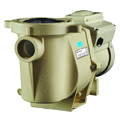 | up to 90% | 3 HP | 8 | Check Price | |||
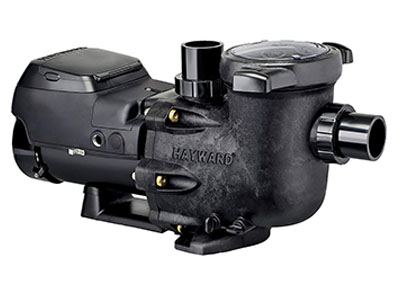 | up to 80% | 3 HP | 4 | Check Price | |||
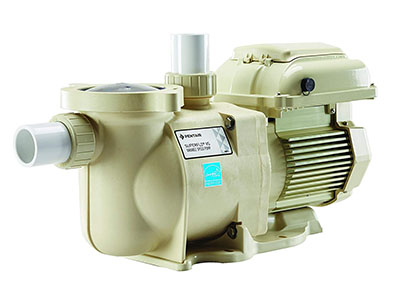 | up to 80% | 1.5 HP | 3 | Digital display | Check Price | ||
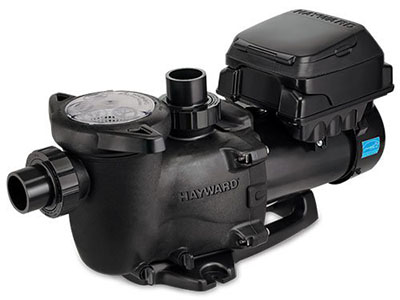 | up to 80% | 1.65 HP | 4 | Check Price | |||
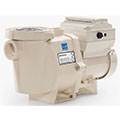 | up to 90% | 3 HP | 8 | Check Price | |||
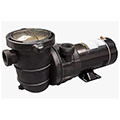 | Better than for standard conventional pumps | 1.5 HP | 2 | Check Price | |||
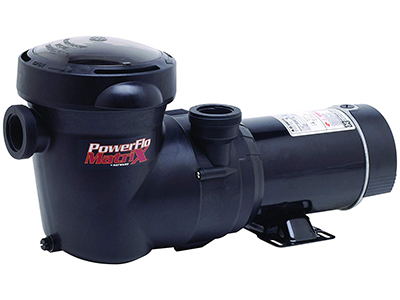 | Savings are impressive | 1.5 HP | Dual | Check Price | |||
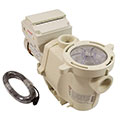 | up to 90% | 3 HP | 8 | Check Price | |||
 | up to 40% | 2 HP | dual | Check Price | |||
 | up to 80% | 1.65 HP | 8 | Check Price |

1. Pentair 011018 IntelliFlo Variable Speed High-Performance Pool Pump – for Silent Operation
The self-diagnostics system and overload protection work to ensure your pump gives you the longest service.
As a 3HP pump, we expected it to be loud, but we were amazed by the quiet operation at 45 decibels which is a characteristic of 1.5HP pumps.
The highlight of the Pentair IntelliFlo is the 8-speed settings and a built-in timer which ensures optimum speed and runtime. For average pools, you can run it 24 hours at 1500RPM using just 300W per hour and still do an impressive 70GPM.
This pump is Energy Star certified and will save you up to 90% when running optimally.
For easy programming, we also have an LCD and touchpad controls. The pump is also compatible with automation systems including IntelliTouch, EasyTouch, and SunTouch.
One of the reasons you should think twice about the IntelliFlo is the bad reputation Pentair has regarding the warranty.
It’s also unfortunate that for such an expensive product from a reputable brand will leak moisture to the LCD. Well, blocking the view is not the main problem; the water may short the motor.
2. Hayward SP3206VSP TriStar Variable Speed Pool Pump

Being an ENERGY Star rated pump, you are eligible for rebates. Under the hood, we have a totally enclosed fan cooled (TEFC) permanent magnet motor and has 4-speed settings.
We also have onboard diagnostics that detect priming failures while the automatic protection protects the motor in case of extreme temperature and voltage fluctuations.
To ensure maximum efficiency, the TriStar VS works with 2-inch and 2.5-inch plumbing.
When it comes to usability, Hayward designed this pump with a digital touchpad control interface that can be attached to the pump or wall-mounted. It boasts up to 8 custom timer functions and 24-hour programmable clock.
Additionally, it is compatible with automation systems like Hayward OmniLogic® among others.
When you read the negative reviews, you find complaints that this pump doesn’t save energy. Well, this is not a shortcoming because such pool owners are running a pump that is too powerful for their needs. As a 3HP pump, you should install it if you have a large and busy pool that needs constant water circulation. One shortcoming is the loud noise when at maximum speed.
3. Pentair 342001 SuperFlo VS Variable Speed Pool Pump

The 1.5HP pump boasts a TEFC motor that can run at 3 speeds and has an override function to meet the changing demands of your pool.
It efficiently moves water at low speeds and that greatly accounts from the 80% savings it guarantees.
This is among the few pool pumps that are compatible with both 115 and 240V without requiring much wiring.
The Pentair 342001 SuperFlo has a built-in timer and 24-hour clock that kicks in when there is a power outage such that you won’t lose your settings.
In addition, we have a digital display that shows all the crucial operational information.
One of the shortcomings of the Pentair SuperFlo is that the company cuts down the warranty to 60 days if you installed the pump yourself. It will also have problems with self-priming when not used for a while, so you have to prime the pump to get going manually.
The circuit breaker also gets kicked off whenever the pump goes from high to low RPM and so far, Pentair is silent on the problem.
4. Hayward SP2303VSP MaxFlo VS Variable-Speed Pool Pump

This is a 4-speed model and should strictly run on 230V AC lest the motor gets damaged.
Programming the pump shouldn’t be a problem courtesy of the intuitive digital control interface with a backlit LCD.
Here you can see all the important information you need including how much energy you are using at that time.
I’m glad the control panel can be adjusted to four positions for accessibility and convenience.
Another advantage of this system is that it can be automated with systems like Hayward OmniLogic® and ProLogic REV 3 via a relay system.
This pool pump is Energy Star rated and eligible for local rebates.
Our only concern is that whenever you change the speed preset or duration, the pump will start the self-priming again which is unnecessary. The process takes 8 minutes, and there’s no way to stop it.
The pool documentation is not so clear, and as usual, the Hayward customer support is not reliable whether you are asking for help or lodging an issue regarding the warranty.
5. Pentair IntelliFlo VSF Variable Speed Plus Flow Pool Pump 011056
It has a 3HP variable speed 230 V drive providing the owner to set eight programmable speeds or settings for the flow with a timer.
This pump proves reliable operation during the whole cycle of the filtration system, providing the right amount of flow at each stage adjusting it to minimize energy losses. It has a variable speed drive and a variable flow pump.
This reliable pump is ENERGY STAR certified as well. In addition, this high-efficiency drive works almost silently at 45 decibels only.
The pump performance is controlled with a rotatable keypad with very easy settings to set the required flow. The keypad can even be installed on the wall if required. The automation system can be integrated into overall spa or pool control systems, such as EasyTouch, SunTouch Pool, or Pentair automation systems.
To increase the pump’s durability, a fan is installed in the pump body (TEFC motor).
The pump warranty would be up to 3 years if professionals did the installation; it is 60 days for self-installation.
Despite all positives, the problem of lost settings if the power was terminated abruptly occurs. The solution is to reset factory settings per manual instructions or address the problem to professionals.
6. Blue Torrent Pumps 1.5 HP Maxi Pump – Dual Port/Standard Plug – 2 Speed
The pump operates quietly after easy connection to a 110 V AC 6 ft. standard power cord with a plug to the electricity. The plug can be standard or twist-lock. For installation, no extra hardware is required.
It is equipped with an additional extra-large basket strainer for leaves to prevent any clogs and to stay the pump dry. The strainer can be easily extracted via the top-mounted threaded lid with a quarter-turn lock in the inspection of the pump or removal and cleaning of debris. Additionally, it has an integral drain plug for easy pump winterization in the body.
Dual 2” discharge ports allow to quickly set up the pump horizontally and vertically and match 2″ plumping ports available for most pool filters and hoses. In addition, there are available threaded fittings for 1.5″ tubes in the package.
The pump housing consists of corrosion-proof polymer that ensures long operation life with any filter (sand, DE, or cartridge) in all weather conditions.
The warranty from the Manufacturer is one year.
Please remember that this pump is not suitable for small pumps as it has only two speeds. The pump also cannot be shipped to California.
7. Hayward SP15932S PowerFlo Matrix Pool Pump
With Hayward PowerFlo Matrix, you get the same practical performance of an entry-level variable speed pool pump at a cheaper budget.
In low speed, which is equivalent to the setting number 3 in the Blue Torrent Pumps VS, it achieved an impressive 43GPM.
This pump boasts a 1.5HP heavy duty motor with overload protection guaranteeing the best in class performance and durability.
Designed for 1.5-inch piping, it converts from horizontal to vertical water discharge, and that makes it suitable for both inground and above ground pools.
Of course, this is not a variable-speed pool pump so you might not get all the savings and extras that come with VS pumps. But the savings are impressive and that’s what makes it rank closer to variable-speed models.
Unfortunately, there have been a lot of cases of leaks and consequently, problems with priming. Cross your fingers you don’t get a faulty pump, and it will serve you very well.
8. Pentair 011028 IntelliFlo VS Pool Pump – for Pool and Spas
Eight speed options mean variable GPM rates between 20GPM to 140GPM.
When it comes to the motor itself, we see an ultra-efficient permanent magnet motor design of 3HP. It has that very totally enclosed fan cooled design (TEFC). Thus, long life and reduced noise (about 45 decibels) are guaranteed. The product is also 90% more energy-saving than traditional pumps.
The only cons so far are high price and several cases of pump leaking after 1-2 months of use. However, it seems to be rather an exception than the rule.
9. XtremepowerUS 2HP In-Ground Swimming Pool Pump
The pump belongs to the category of single voltage dual speed pumps. Speeds change automatically, providing about 100 GPM and a 5280GPH transfer rate.
There is no digital controller and the like. However, the motor is heavy-duty and high-performance with air-flow ventilation. It’s not the TEFC, but the operation goes quieter and cooler too. The HP rate is 2HP.
The pump also comes with 2″ inlet connections for ports and a large, built-in debris basket.
With all the pros, please mind that you’ll get no super energy savings here. Many users complain about cheap plastic parts that break quickly. Besides, though we have 2HP here, the unit may feel weaker than some 1.5HP pumps because of the low amp rate (7.5). So make sure you consider this beforehand. Otherwise, it’s a wonderful, affordable, simple, and efficient product.
10. Hayward W3SP2603VSP Super Pump VS Variable-Speed Pool Pump
Let’s consider each point separately.
Here is a variable-speed pool pump with a self-contained 24-hour clock and up to 8 custom speed and timer functions. All control goes through a built-in fully programmable touchpad. Once again, it can rotate in four different positions for your convenience.
Though the motor is slightly weaker, it features a permanent magnet design with totally enclosed fan-cooled technology (TEFC). Your energy economy will form up to 80% over single-speed pumps.
Rotation per minute varies from 600 to 3450 RPM, and we also get 69GPM.
The unit suits all inground pools and can operate both in standalone mode or in connection with any automation system.
Cons are traditionally the same for such a top-level product, i.e., literally none. The only concerns are high price, tricky warranty conditions, and possible leakages.
Also, several touchpad positions make this Hayward more than a great product in terms of design compared to many other pumps in our review. Pick up Hayward W3SP2603VSP Super Pump VS if you look for the best design.
Buying Guide
We will also discuss some important buying tips to help you get the best value for your money. Without further ado, let’s get to business.
What is a variable speed pool pump?
A variable speed pool pump is a type of pool pump that can operate at different speeds, allowing the user to adjust the speed to match the specific needs of the pool.
Unlike traditional single-speed pool pumps, which run at a constant speed, it offers greater energy efficiency and can help reduce energy consumption and lower monthly utility bills.
Pros of variable speed pool pumps
- Cuts down running costs – VS pumps will save 50-70% of your monthly energy bills as you are able to control the speed minutely. Even though the initial cost is expensive, you will recoup your money in less than three years. However, if you plan to sell your property or you are not there permanently, you won’t realize the ROI.
- Enhanced usability – These models will come with digital control for accurate inputs as well as readings. Additionally, the pump features onboard diagnostics for enhanced usability.
- Lower operation noise – These pumps have been designed with the latest efficient Totally Enclosed Fan Cooled (TEFC) motor that runs quietly. Also, the fact that you can run them at low-speed settings means you can now run it without waking up the baby.
- Durability – These pumps last three times longer than the single speed and two-speed models. So, instead of buying a dual speed that lasts 5 years on average, buy a variable speed model which offers a minimum of 15 years.
- Increases property value – Any installation that saves energy or water will increase your property’s value.
Cons of variable speed pool pumps
- Higher Upfront Cost: Variable speed pool pumps tend to be more expensive than traditional single speed pumps, with a higher upfront cost.
- Complexity: Some users may find the adjustable speed feature and other advanced functions of variable speed pool pumps to be more complex than traditional single speed pumps.
- Maintenance: Variable speed pool pumps require regular maintenance to keep them functioning at peak performance.
- Professional Installation: Variable speed pool pumps may require professional installation, adding to the overall cost of the pump.
- Power Source Requirements: Some models require a dedicated power source, which may not be available in all locations.
How do variable speed pool pumps work?
To understand how the multiple speed pool pumps work, it will be important to first understand the working mechanism of the single speed and dual speed, models.
Single speed – These pool pumps are the most popular because they have been around for the longest time and most importantly, they are the cheapest in the market. Single-speed pumps come with the old induction motor that runs on one speed only at 3450RPM. They operate at a single horsepower; from 0.5HP to 3.0HP depending on the model and are very loud when in operation.
Dual speed – Also known as two-speed pumps, these have the same induction style motors but have been engineered to operate at low power (1725RPM) and high power (3450RPM). Unlike the single speed, these pumps operate at two horsepower as well. The fact that they can be run at lower speeds makes them efficient and also quiet when in a low power setting. However, fine-tuning the flow rates may prove to be a hard task just like in the single speed models unless you have an additional controller.
Variable speed – Now, coming to the VS pumps, we have an entirely new motor design. They come engineered with a permanent magnetic motor, the same that are used in electric cars. These motors run at multiple speed settings; from as slow as 600RPM to 3450RPM which is the maximum. The motor in VS pumps runs at different amperage unlike the dual speed, and that’s how you cut down on the energy costs. Additionally, pool owners can dial in the desired flow rates on the digital control interface.
Factors to consider
In this section, we want to do a roundup of all the important things that should inform the choice of your pool pump.
1. Brand
What brand are you buying? Is it the cheap pool pump brands or renowned manufacturers.
We always recommend buying from top brands; the likes of Intex, Pentair, Hayward, and Harris just to mention a few. These brand guarantee efficiency and durability.
This is unlike their cheaper counterparts which don’t realize considerable savings and won’t last long.
Another thing, top brands offer the best after-sales service. The warranty is genuine, and replacement parts are readily available and affordable.
One thing about these household names is that they are quite expensive. So, while you may be out looking for a cheap variable speed pool pump, don’t go too low lest you end up with a substandard product.
2. Pool volume
This refers to the maximum amount of water your pool holds. It is imperative that you buy a pump that can comfortably handle the capacity of your pool and still give a 24-hour turnaround.
If you installed the pool yourself, you must be aware of the volume. However, if you are not privy to this data, you can still find out the pool’s volume using other methods.
For rectangle pools, it is very simple. You find the volume using the conventional formula – Length x Width x Average Depth. This will be the volume in cubic feet so to get the amount of water in gallons, multiply the result to 7.5 – that is the volume of your pool.
However, for the irregularly shaped pools, it is quite different, and you will have to use the online pool volume calculator to get accurate results that you can base your purchase on. But here are the formulas if you are ready for some math.
Oval pool = ½ length (ft) x ½ width x average depth x 3.14 x 7.48
Round pool = radius (ft) x radius x average depth x 3.14 x 7.48
Now that you know the amount of water your pool holds, you are good to go. With this information, you can find the appropriate flow rate that will run with your pool efficiently.
3. Flow rate
The essence of knowing your pool volume is for one reason; to find the appropriate pump size especially in terms of flow rate. For starters, flow rate refers to the amount of water your pump can turn over per given time.
Ideally, you want to have at least two turnovers daily to achieve the best pool hygiene. Without this, your pool will be susceptible to algae infestation, the build-up of debris and pH imbalance. That said, you need to invest in a pool pump that is powerful enough to circulate twice the capacity of your pool.
When discussing the flow rate, it is imperative to note that there are minimum flow rate and maximum flow rate which are both represented in gallons per minute.
Minimum flow rate refers to the minimum amount of water per minute which your plumbing needs to move to circulate your pool water twice a day. To get the minimum flow rate you require, divide the pool volume in gallons by 1440 (number of minutes in 24 hours).
15,000 x 2 turnovers = 30,000 gallons
30,000 gallons ÷ 1440 minutes = 20.8GPM
As for maximum flow rate, this is the maximum amount of pool water your pump can handle in a minute or hour though it is popularly represented in minutes. To get the maximum flow rate, divide the pool volume by the minimum flow rate.
While other aspects like horsepower and plumbing sizes are important, the flow rate is fundamental, and once you get it right here, nothing will stop you. However, when you get it wrong here, chances are high you will not get value for your money.
4. Horsepower
The discussion about a pool pump’s performance won’t be complete without looking at horsepower as a dynamic.
These pool accessories are available in different horsepower;
- 0.5HP,
- 1.0HP,
- 1.5HP,
- 2.0HP,
- 3.0HP.
In vehicles and other power tools, the highest horsepower is always the best choice, but here, it is not the case.
A large pump may also render your system inefficient by overwhelming the other systems unnecessarily. Such a pump may also lead to cavitation (formation of bubbles) and in the long run, this may damage the pump.
Indeed, horsepower should be an important consideration when choosing a pool pump. However, don’t let the horsepower guide you. Instead, try to match the pool to the pump on your wishlist.
5. Motor
These pumps all have this kind of motor, but besides that, there are a few differences you need to understand.
You need to consider the type of motor used and the voltage it requires. We have those that work 1ith 115V while others are strictly for 230V.
The best, however, is a variable speed pool pump that works with both 115V and 230V without requiring any electrical wiring.
Also, consider the speed settings offered by the motor. As you are aware, we have the one-speed and the two speed options.
As for variable speed pool pumps, you have the choice of 3, 4 up to 8-speed settings. The best is one with the most speed calibrations. But don’t mistake more power settings for more efficiency.
6. Pool pipe sizing
Besides the horsepower and flow rate, also consider the size of the piping to get the most out of your pump.
Typically, you will find two plumbing sizes; 1.5-inch and 2.0-inch though we also have 3-inch options but rarely.
The wider the diameter of the pipe, the more water flows through, but at a lower pressure. On the other hand, a narrow-diameter pipe will pump lesser water and at higher pressure.
The general rule of the thumb is to ensure the speed of water in the pipes doesn’t exceed 7 seconds on average.
So, to make sure you are operating within this range, here are the recommendations for the GPM of each pipe sizing.
- The 1.5-inch pipes are synonymous with the old systems and may not function properly with the new, and powerful pumps. When using this plumbing size, restrict yourself to 44GPM.
- As for 2-inch pipes, the recommended is 78GPM while the 2.5-inch and the 3-inch pipes will work best at 120GPM and 160GPM respectively.
Pipe diameter | 1.5-inch | 2.0-inch | 2.5-inch | 3.0-inch |
|---|---|---|---|---|
Maximum flow | 42GPM | 73GPM | 120GPM | 160GPM |
7. Filter maximum flow rate
When assessing flow rate, also remember to factor in the type of filter you are using. This is because all filters have specific flow requirements.
Sand Filter
Surface area (sq. ft.) | 1.8 | 2.3 | 3.1 | 4.9 |
|---|---|---|---|---|
Maximum flow rate | 40GPM | 50GPM | 60GPM | 100GPM |
DE Filter
Surface area (sq. ft.) | 24 | 36 | 48 | 60 |
|---|---|---|---|---|
Maximum flow rate | 36 - 48GPM | 54 - 72 GPM | 72 - 96 GPM | 90 - 120 GPM |
Cartridge filter
Surface area (sq. ft.) | 100 | 200 | 300 | 400 |
|---|---|---|---|---|
Maximum flow rate | 32 - 38 GPM | 55 - 75 GPM | 80 - 112 GPM | 100 - 150 GPM |
If you have a D.E filter, note that for maximum flow rate, they have been rated at 2 GPM/sq. ft. of filter area. Essentially, this means that 48 sq. ft. D.E. filter has a maximum flow rate of 96GPM and in the same token, a 60 sq. ft. will have a 120GPM maximum flow rate.
Sand filters offer varying flow rates and are normally calibrated, so you don’t have to stress yourself with the arithmetic.
Make sure you know what your filter can handle and match it with the pool pump.
The cartridge filters also have been calibrated with the flow rates they can handle. Also here, match the manufacturer’s recommendation with the particular model lest you end up with short cleaning cycles.
8. Total Dynamic Head
One of the most ignored aspects when buying a new pool pump is the Total Dynamic Head.
For starters, TDH is a representation of the amount of back pressure in the pool plumbing system.
Your choice of a pool pump should also be informed by the TDH of your pool to ensure adequate water circulation. It also ensures that your pool system runs efficiently and as you know, the pump is the heart of the pool plumbing system.
The average residential inground pool has a TDH of 50 – 60 while above ground pools range from 20 – 30.
However, this may vary depending on the pool’s size and the presence of other pool accessories like fountains which create resistance. If you are not running any major accessories mentioned, the above figures should operate your system efficiently. Otherwise, here is a table to guide you further.
Inground vs above ground pool TDH
Pool | Backwash valve | Filter | Heater | Plumbing | Return | Total TDH |
|---|---|---|---|---|---|---|
Inground pool | 16 | 12 | 8 | 4 | 4 | 44 |
Above-ground pool | 10 | 8 | 4 | 4 | 2 | 28 |
9. Control and safety features
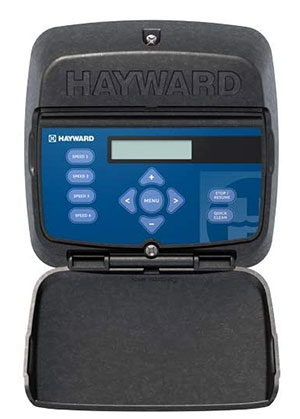
Go for a model whose motor has the most speed settings to give you more control over the speed. These pumps are also compatible with intelligent pool systems, for example, IntelliTouch and, SunTouch Pool Control Systems.
It is also worthy to check out safety features and onboard diagnostics.
The safety features protect the major components like the motor from damage that may arise from electricity short and the likes.
On the other hand, the onboard diagnostics will alert you in case there is a problem which is a great idea compared to the older systems which will continue running and extending the damage.
10. Efficiency
The reason manufacturers are focusing on variable speed pool pumps is because of their efficiency.
These systems cut down the running costs dramatically; we all agree on that. But then, savings are relative; what one brand may save you in monthly electricity bills is not what another brand will replicate.
That said, you need to be careful with the variable speed model you settle on.
In case you are not sure which pool pump to choose, look out for the Energy Star mark. A model with this certification means an independent body has tested it and proved that indeed, it saves energy.
11. Warranty & after sales
Now, away from the features and specifications, you also need to consider the warranty and after sales.
It is really imperative that you read the terms of the warranty to understand what it covers and what it doesn’t. Of importance is the recommended installers. Some brands insist that the pump is installed by a professional or in some cases, an accredited installer. Failure to adhere to this leaves your warranty void.
We recommend buying from the top brands as they honor the warranty, unlike these cheap brands that become dodgy when you have a complaint.
As for after sales service, you may need to connect to the customer support for one reason or another.
Again here, buy from the top brands because they have steadfast support and enough resources to help you with installation and troubleshooting. Above all, replacement parts are readily available and affordable.
Summary
There you have it ladies and gentlemen, a review of the best variable speed pool pumps. Indeed, these are the new kids on the block, and even though they are expensive, they can cut down your pool running costs dramatically.
But make sure to calculate your pool’s needs before settling for any pump. And remember, bigger is not always better when shopping.
So, which one suits your needs and why? Engage our experts in the comments section below. Our pool experts will be glad to engage you.


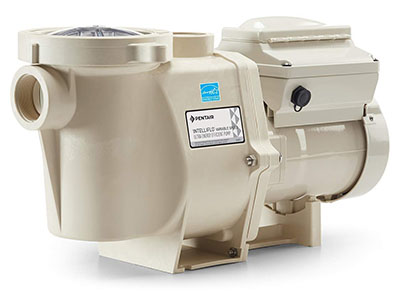
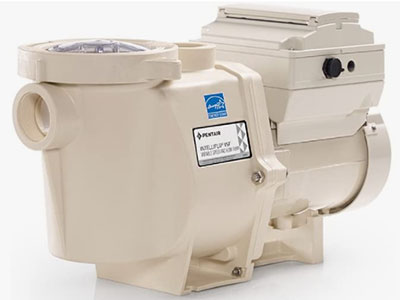
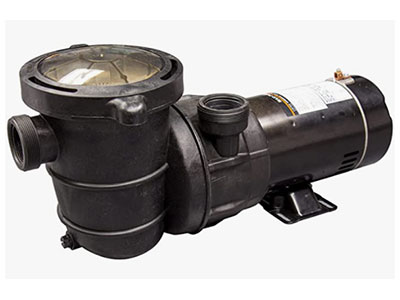

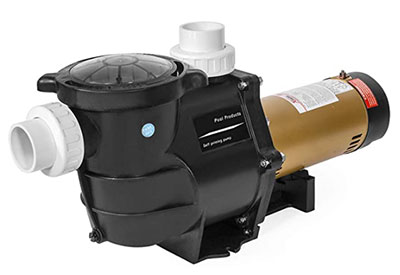
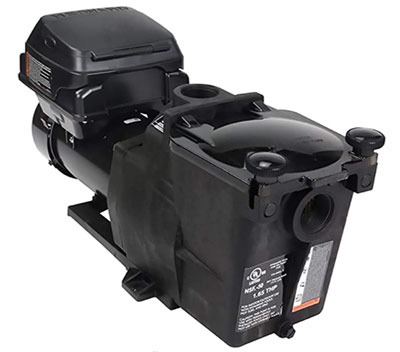

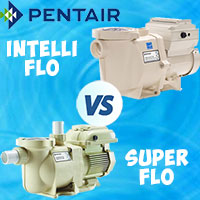


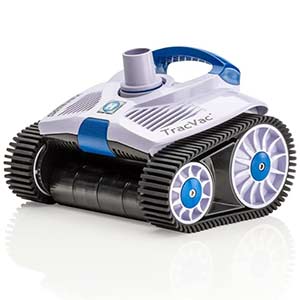
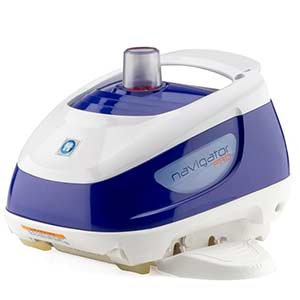
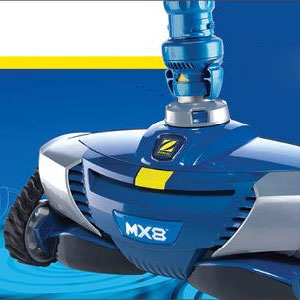
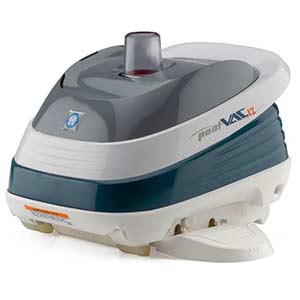

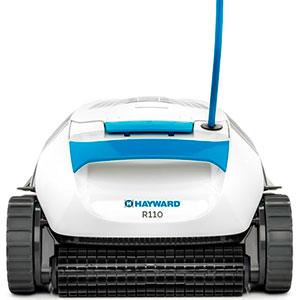
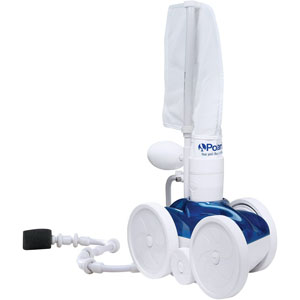
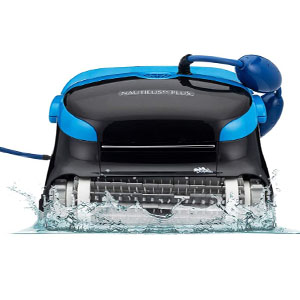
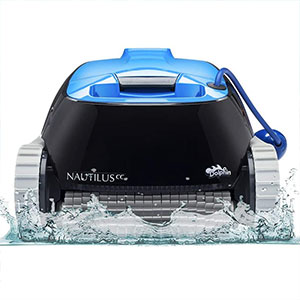

Jack
Hi! Thank you for the review. But could you explain how variable speed pumps save so much energy – 80%-90%? How do they measure it? Thanks!
Markus Robertson
Hello, Jack! Great question, thank you a lot! The pumps we discussed above have a variety of speeds, which are programmable or automatic. Depending on the speed chosen, your pump can run water with double or triple pressure within doubly or triply less time, respectively. For example, where regular pumps run full speed for 6 hours, these require 3-2 hours. Thus, the flow rate is directly proportional to speed, and the savings are a result of this.
Alex Evans
Hello! Do Hayward and Pentair produce their pumps in the US?
Markus Robertson
Hello, Alex! Thank you for your question! Hayward and Pentair do have manufactures located in the USA, and many of their pool pumps are made in America.
Andrew
Nice review, thank you! Is it really safe to run a variable speed pump 24 hours per day? How many hours should you run it?
Markus Robertson
Hello, Andrew! Thank you for your question! It is absolutely safe to run your pump 24 hours per day as they are specially constructed for non-stop operation. They can deal with overloading and overheating themselves by changing the speed of operation from time to time. That’s why you can turn it on and forget about it.
Landon Colten
Hi! I love your review, the information is pretty accurate and full, thank you. Two years ago, I got Pentair 23055 Sta-Rite IntelliProXF(for an inground pool). The smart functions, set of speeds and automatic switch were all great. But energy economy was not as impressive as I expected it to be. So, if anybody is going to get it, please mind. Otherwise, I can recommend it.
Marcus Robertson
Hello, Landon! Thank you very much for your comment and true user experience! Reductions in the energy economy are sometimes possible if you run a pump longer than it’s needed. Anyway, it’s great you shared your opinion with us to help other customers.
Eugene
Hi! I’ve got all my pool communications near the lounge zone. So, I’m looking for as a quiet pump as possible. Which of these units would you advise? Thanks.
Marcus Robertson
Hello, Eugene! Thank you very much for your question! If you’re looking for a quiet pump, we’d recommend you trying Pentair WhisperFlo series. This is the latest Pentair pump line that features super-silent performance.
Max
Hi! Thank you for the review. Unfortunately, I noticed that covid hit the pool market pretty hard. People now care about pools less, and retailers are afraid to purchase lots of models too. I couldn’t find a new Sta-Rite(( That’s the problem I think.
Marcus Robertson
Hi, Max! Thank you very much for your kind words and opinion! Indeed, we also noticed a kind of deficit, but market is recovering. Many companies offer pre-orders, so we’d recommend you calling and getting in line perhaps. Usually the problem is solved very quickly. We’re speaking about several days or a week. Besides, the season is just gaining momentum, so we’ll notice no deficit closer to May we guess. Let’s hope for the best and stay healthy 🙂
Niki
Love your reviews, thank you and many thanks to the whole team! You mentioned several times totally enclosed fan cooled motors or TEFC. It’s just not quite clear to me why it’s so great?
Marcus Robertson
Hi, Niki! Thank you very much for your kind words and question. TEFC stands for totally enclosed fan cooled motor construction. Such design is considered one of the most up-to-date. TEFC means your pump motor is more resistant to overloading and overheating. Additional cooling and load protection results in much longer service life. Besides, TEFC pumps requires less energy. As a rule, these models offer several speeds (often with automatic ajustment) and consume from 30% to 80% less energy compared with standard single speed pumps.
Wang
I see here and there a lot of certificates. But I do not understand what they mean. Why do I have an Energy Star Certificate on the pump, but I do not have it on my pool? What does it mean? And what are the advantages of Energy Star Certification of the pumps?
Marcus Robertson
Hello Wang! Thank you for your interest in pool pumps. Energy Star Certificate is a well-known mark of high efficiency in homes, buildings, or other industrial facilities. The pumps certified with Energy Star are better than standard products, use less energy, and are environmentally friendly. To earn this certificate, all pumps should pass strict criteria from the US Environmental Protection Agency or the US Department of Energy. Top certified pumps can save up to 90% of energy compared to non-certified pumps.
Brandi
Thank you for the list of top variable speed pumps. I am wondering where the location of the pump should be among other pool equipment. I want to install all pieces correctly for a long practical life.
Marcus Robertson
Hello Brandi! Thank you for your interesting question. The sequence of water equipment installation is always in the same order:
1)A water pump on the suction line with a skimmer to suck water from the pool;
2)A filter (any type);
3)A heater for heating pool water if required;
4)A chlorinator or salt generator (or any other additional equipment) for chemical treatment if required to reduce the chemical influence on metal components on the heater, filter, and pump.
Ann
Can Pentair IntelliFlo be integrated into the overall pool equipment control system? It is so modern to have one control panel for all electrical equipment in your house and control it with a smartphone from anywhere in the world.
Marcus Robertson
Hello Ann! Thank you for your interest in Pentair products! Sure. As with any other Pentair pool equipment, it can be integrated into a pool management system for centralized control of all pool devices, from water features to pumps. I recommend combining this IntelliFlo pump with the IntelliCenter Pool Control System, which is compatible with Android, iOS, Mac, and other PCs.